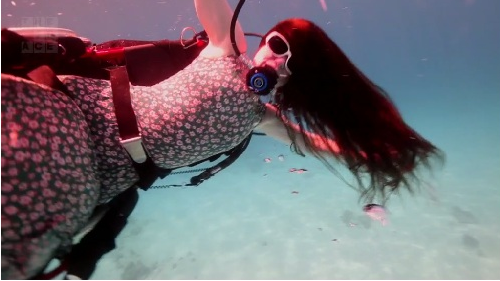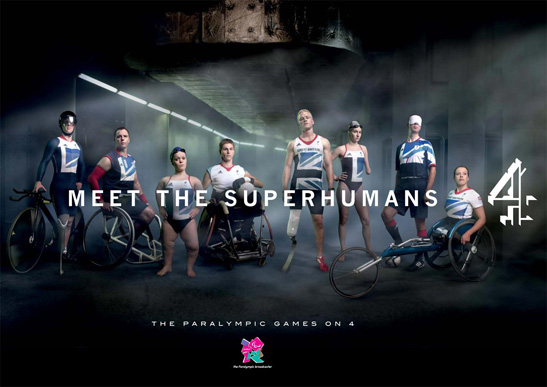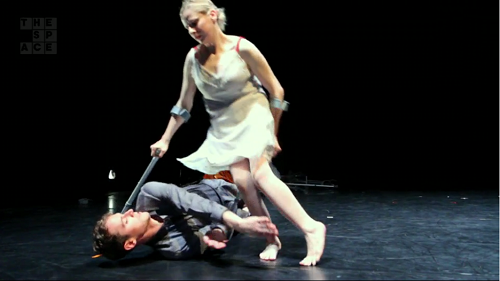
It explores the ways their conditions, reflected in their work, have liberated them, and given them an outlook on life which is rarely represented in the artistic community.
Composed of interviews with artists filmed during the Unlimited commissions strand of the London 2012 Festival, the film was made during a period when public awareness was acutely focused on the disabled community. Much of this awareness was raised through the London 2012 Paralympic Games and Channel 4’s publicity material for their coverage of the event which saw the tagline ‘Meet the Superhumans’ above the image of a team of disabled athletes plastered on every billboard, webpage and television screen around the country.

‘Meet the Superhumans is quite a lot to live up to’, argues comedian Laurence Clark in reference to the Games. Born with cerebral palsy, Clark’s humour stems from making fun of the awkward, knee-jerk reactions many able bodied embody in their treatment of people with disabilities. Most importantly for Clark, his humour is about dispelling the condescending notion that all people with disabilities should be regarded as inspiring and aspirational figures solely on account of their impairments. Parodying this attitude, Clark shows a video of him harassing able-bodied passers-by on the street with the phrase ‘you’re so inspiring’.
‘People tend to regard disabled people in terms of extremes’, says Clark. ‘They’re either inspiring or a benefit scrounger. I want to be seen as somewhere in the middle.’ Clark’s outlook is reflected in the work of the other artists documented in the film who view their disabilities as neither impairment nor a source of aspiration, but as a new way to experience and communicate the challenges inherent in the human condition.
Performance artist Sue Astin uses her art to explore the liberating worldview that her confinement to a wheelchair has pushed her to explore. She uses her wheelchair as a tool to ‘paint and play with’ and her video art shows her exploring the surface of a coral reef, her chair equipped with on-board motors and breathing equipment to push to the extremes of what is physically possible for her.
‘The wheelchair is a portal that pushes me through into a new level of awareness—conceptually, physically, and emotionally. The messages I got from society when they see me in a wheelchair were ‘oh no, what a shame’, when what I want to show people is that if I can do that, they can do anything.’
Artists like Clark and Astin constantly try to alter people’s perceptions of disability through their work. For dancer/choreographer Claire Cunningham, this message takes on a personal significance. Her show focuses on perceptions of physical beauty and how physical disability can irrevocably alter who we are in the eyes of others.
‘We have these warped ideas of who we are and how we look to other people. I had a very traditional view of what was beautiful and what was attractive… For many years, I did not want to go out with a disabled person.’
Her show addresses issues of loneliness brought on by physical disabilities (in one instance, she symbolically cradles a boyfriend made out of crutches), but also the true beauty inherent regardless of her condition as she dances gracefully with an able bodied partner. Ultimately, there is a motive at the heart of her show and that is for non-disabled people to look on disabled people as potential partners.

The artists in Total Permission represent possibilities: what it is possible to be regardless of one’s physical or mental condition; what people living with disabilities can be in the eyes of those without; the possibility for human experiences to be shared and understood. To say that what they are doing is inspiring would perhaps be an insult; more appropriately, the film offers a captivating insight into the ideas of a marginalised community and offers a take on the human condition which is rarely seen in the artistic world.